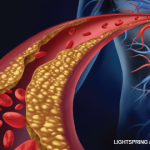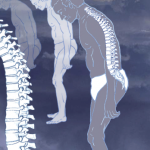NEW YORK (Reuters Health)—Risk of myocardial infarction (MI) is increased in patients with spondyloarthritis (SpA) who use the nonsteroidal anti-inflammatory drug (NSAID) diclofenac, but not in those who take naproxen, researchers say.
Maureen Dubreuil, MD, MSc, of Boston University School of Medicine, and colleagues analyzed 20 years of medical records from the U.K.’s Health Improvement Network for adults ages 18–89 with incident ankylosing spondylitis (AS) or psoriatic arthritis (PsA), two forms of SpA. Controls had incident osteoarthritis (OA).
Within each cohort, the team then matched each MI case to four controls without MI.
NSAID use was categorized as a) current (prescription within 180 days prior to index date); b) recent (181-365 days); or c) remote (>365 days).
The daily dosage of diclofenac was 100 mg or more in 92% of individuals with OA, 95% of those with AS and 92% of those with PsA. The most common daily dosage of naproxen was 1,000 mg (55%); the dose was 1,000 mg or more in 56% of patients with OA, 63% of those with AS and 72% of those with PsA.
Among those whose most recent prescription was an NSAID other than diclofenac or naproxen, the most common drugs were ibuprofen (55%), celecoxib (11%), meloxicam (10%), rofecoxib (7%), etoricoxib (5%), indomethacin (3%) and etodolac (3%). All other NSAIDs accounted for 2% or less of prescriptions.
Within the SpA cohort of 8,140 and the OA cohort of 244,339, there were 115 and 6,287 cases of MI, respectively.
As reported online April 19 in Annals of Rheumatic Diseases, current diclofenac use was associated with an adjusted OR of 3.32 for MI in SpA patients. The risk was also increased in those with OA (aOR, 1.26).1
A similar pattern was seen with current use of other NSAIDs (aOR, 1.17), but not with current naproxen use (aOR 0.98).
Because current diclofenac was associated with increased MI risk, the authors also assessed whether recent use (18–365 days from prescription date) conferred risk. The unadjusted OR for recent use in SpA was 1.45, and in OA, 0.94. By contrast, recent naproxen was not associated with an increased or decreased risk in either SpA or OA.
Overall, the authors state, “Current use of diclofenac in SpA was associated with a twofold to threefold risk of MI relative to remote use of any NSAID.”
“[Although] this finding warrants some concern,” Dr. Dubreuil tells Reuters Health, “similar studies should be conducted in other data sets and other populations to help determine if a change in clinical practice is warranted.”
“If confirmed,” she says by email, “it is possible that subsequent treatment guidelines would recommend for or against a specific NSAID as first-line treatment in spondyloarthritis.”
Daniel Solomon, MD, MPH, chief, Section of Clinical Sciences, Divisions of Rheumatology and Pharmacoepidemiology at Brigham and Women’s Hospital in Boston comments to Reuters Health by email, “We know that all NSAIDs confer cardiovascular [CV] risk. However, most patients with normal CV risk who use these agents intermittently will not experience harm. Chronic use of NSAIDs in patients with certain risk factors is associated with substantial potential for CV and other adverse events.”
“The best data we have on these issues comes from large randomized controlled trials, such as PRECISION which tested different NSAIDs across patients with osteoarthritis (OA) or rheumatoid arthritis (RA),” says Dr. Solomon, who was a coauthor on PRECISION.2
“No important differences were found in relative risks across different NSAIDs by disease,” he notes. “In other words, patients with OA and RA experienced the same relative risks by NSAID. However, the CV risk was higher in RA so absolute risks were higher for the RA patients.”
The authors of the current study “specifically examined patients with spondyloarthritis and with OA and found that use of current diclofenac conferred an increased relative risk for CV events compared to past use among both patient groups, but the relative risk was increased for SpA compared with OA,” he says.
“This is interesting and there are biologic reasons why this is plausible,” he says, “but by no means are these results practice-changing. NSAID observational studies are very tricky because of confounding by indication as well as over the counter NSAID use. These results should generate new hypotheses that might be tested in prospective cohorts.”
Patients should not be told to steer clear of diclofenac, he adds. “All NSAIDs, including celecoxib, confer CV, gastrointestinal and renal risk. Patients should not use these agents chronically if they have known CV or renal disease.”
Reference
- Dubreuil M, Louie-Gao Q, Peloquin CE, et al. Risk of myocardial infarction with use of selected non-steroidal anti-inflammatory drugs in patients with spondyloarthritis and osteoarthritis. Ann Rheum Dis. 2018 Apr 19. pii: annrheumdis-2018-213089. [Epub ahead of print]
- Nissen SE, Yeomans ND, Solomon DH, et al. Cardiovascular safety of celecoxib, naproxen or ibuprofen for arthritis. N Engl J Med. 2016 Dec 29;375(26):2519-29. Epub 2016 Nov 13.

